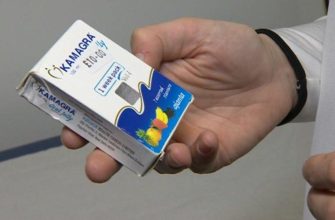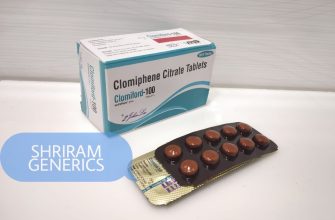Consider finasteride 5 mg if you’re a woman experiencing significant hair loss due to androgenetic alopecia (female pattern baldness) and other treatments haven’t worked. We explore how this medication, typically prescribed for men, may offer a viable solution for certain women when prescribed and monitored carefully by a doctor. Many women see the difference within three to six months of consistent use, noticing less hair shedding and, in some cases, regrowth.
While finasteride 5 mg isn’t FDA-approved for women, some doctors prescribe it off-label. This happens because the drug targets dihydrotestosterone (DHT), a hormone linked to hair loss. This strategy is most effective for postmenopausal women because of the potential risks to a developing male fetus if a woman becomes pregnant while taking finasteride. Always discuss your medical history, including any family history of breast cancer or other hormone-sensitive conditions, with your doctor.
Before starting finasteride 5 mg, your doctor will likely perform blood tests to check your hormone levels and rule out other potential causes of hair loss. You should also understand potential side effects like decreased libido, mood changes, and, in rare cases, breast tenderness. Knowing what to expect helps you decide if the benefits outweigh the risks in your specific situation. We’ll guide you through the information you need to discuss with your healthcare provider to make an informed decision.
- Finasteride 5mg for Women: A Detailed Guide
- Understanding the Risks
- Administration and Monitoring
- Alternative Treatments
- Is Finasteride 5mg Ever Prescribed to Women?
- Potential Benefits and Risks for Women
- Alternative Treatments
- Finasteride 5mg: Potential Risks and Side Effects in Women
- Alternative Treatments for Hair Loss in Women
Finasteride 5mg for Women: A Detailed Guide
Finasteride 5mg can treat androgenetic alopecia (female pattern hair loss) and hirsutism (excessive hair growth) in women, but its use requires careful consideration. Consult your doctor before considering this medication; they can assess your specific situation and potential risks.
Who Might Benefit? Finasteride 5mg may be an option for women experiencing significant hair thinning at the crown of their head or those struggling with unwanted facial or body hair. It’s generally prescribed when other treatments, like topical minoxidil or anti-androgen birth control pills, haven’t yielded satisfactory results.
Understanding the Risks
Pregnancy Risk is Paramount: Finasteride is absolutely contraindicated during pregnancy due to the risk of severe birth defects in male fetuses. You must use effective contraception while taking finasteride, and stop it immediately if you become pregnant. Inform your healthcare provider about your plans.
Potential Side Effects: Some women may experience side effects, including:
- Decreased libido
- Mood changes
- Dry skin
- Headaches
Report any unusual or bothersome side effects to your doctor. They can adjust your dosage or suggest alternative treatments.
Administration and Monitoring
Your doctor will likely start you on a lower dosage and gradually increase it to 5mg, based on your response and tolerance. Typically, you’ll take one 5mg tablet daily. Regular blood tests may be necessary to monitor your hormone levels and liver function.
What to Expect: It can take several months (3-6 months, or more) to see noticeable improvements in hair growth or a reduction in unwanted hair. Patience and consistent use are important. If you stop taking finasteride, the positive effects will likely reverse over time.
Alternative Treatments
Explore all available options with your doctor. Other medications, like spironolactone or cyproterone acetate, may offer comparable benefits with different side effect profiles. Laser hair removal is an option for managing hirsutism.
Important Note: This information is for informational purposes only and shouldn’t replace the advice of a qualified healthcare professional. Only your doctor can properly evaluate your health situation and determine if finasteride 5mg is appropriate for you.
Is Finasteride 5mg Ever Prescribed to Women?
Finasteride 5mg is rarely prescribed to women, primarily because it carries a risk of birth defects if taken during pregnancy. However, in specific circumstances, doctors might consider it for postmenopausal women or those with severe hirsutism (excessive hair growth) who aren’t planning to conceive and have not responded to other treatments.
The FDA hasn’t approved finasteride for use in women. Therefore, its use is considered “off-label.” Off-label use means a medication is used in a way that’s not described in the approved labeling.
Potential Benefits and Risks for Women
When prescribed for women, finasteride aims to reduce dihydrotestosterone (DHT) levels, a hormone linked to hair loss and excessive hair growth. Studies focusing on women show mixed results, with some demonstrating improvements in hair density or reduced facial hair, while others show limited impact. Dosage can vary, often lower than the 5mg prescribed for men.
It is important to be aware of the side effects. Possible adverse reactions in women could include decreased libido, mood changes, and potentially, menstrual irregularities. Rigorous monitoring by a healthcare provider is vital during treatment.
Alternative Treatments
Before considering finasteride, doctors usually explore alternatives like spironolactone, oral contraceptives, or topical treatments like minoxidil. These options often have a more established safety profile for women of childbearing age. Discussing the advantages and disadvantages of each treatment with your physician is fundamental.
Finasteride 5mg: Potential Risks and Side Effects in Women
Avoid finasteride 5mg during pregnancy due to the significant risk of birth defects in male fetuses. Finasteride can disrupt normal sexual development. Use effective contraception if you’re a woman of childbearing age.
Discuss potential mood changes with your doctor before initiating finasteride. Some women report depression or anxiety while taking the medication.
Be aware that finasteride 5mg may cause decreased libido or sexual dysfunction. Report any such changes to your healthcare provider; they may adjust the dose or suggest alternatives.
Monitor for signs of allergic reactions, such as rash, itching, swelling, or difficulty breathing. Seek immediate medical attention if these occur.
Understand that finasteride’s long-term effects in women are not well-established. Regular check-ups with your doctor are crucial to monitor for unforeseen side effects. Pay attention to any unusual symptoms, and document them for your doctor.
Consider alternative treatments for hair loss if you’re concerned about the potential risks of finasteride 5mg. Discuss options like topical minoxidil with your doctor.
Note that finasteride can affect liver function tests. If you have pre-existing liver issues, discuss with your doctor whether finasteride is suitable for you, and monitor liver enzymes during treatment.
If you experience breast tenderness, enlargement, or nipple discharge while taking finasteride, inform your doctor promptly, as these may indicate other underlying medical conditions.
Know that finasteride could mask the detection of prostate cancer in male partners if they are exposed through seminal fluid. Advise partners taking finasteride to inform their physicians about your finasteride use.
Remember to properly dispose of unused finasteride. Follow pharmacy or local disposal guidelines to prevent accidental ingestion, especially by children or pets.
Alternative Treatments for Hair Loss in Women
Explore Minoxidil, an over-the-counter topical solution. Apply it directly to your scalp to potentially stimulate hair growth and slow hair loss. Consider a 2% or 5% solution. Lower concentrations are generally recommended to start, with a gradual increase if needed, monitoring for any side effects such as scalp irritation.
Try low-level laser therapy (LLLT) devices, like laser caps or combs. These devices emit light that may stimulate hair follicles. Studies suggest LLLT can improve hair density and thickness. Use these devices according to the manufacturer’s instructions, typically for a few minutes several times a week.
Investigate nutritional supplements. Deficiencies in vitamins and minerals can contribute to hair loss. Consult a healthcare provider to check your levels of iron, vitamin D, zinc, and biotin. Address any deficiencies with appropriate supplementation. Don’t assume that high doses will be beneficial without a confirmed deficiency.
Ask your doctor about Spironolactone. Although primarily used as a diuretic, it can also block androgen hormones, which contribute to hair loss in some women. Expect regular blood pressure and potassium level monitoring, since this medication affects these systems.
Consider Platelet-Rich Plasma (PRP) therapy. This involves injecting your own concentrated platelets into your scalp. The growth factors in platelets potentially stimulate hair follicle activity. Several sessions are typically needed, and the procedure can be costly.
If you are experiencing hair loss due to traction alopecia, caused by tight hairstyles, switch to looser hairstyles. Limit your use of heat styling tools and chemical treatments that can damage your hair. Give your hair a break to recover.






